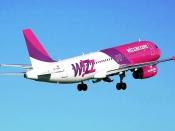Geography & Aviation
An early theme of geographic research on air transportation concerned the development of airline networks. In the 1950s, geographers examined the structure of airline networks in the United States, for instance, as a way of learning about the broader structure of the American urban hierarchy. Today, the scale of interest is global. The world's airlines operate networks within which the primacy of alpha world cities such as London, New York, and Tokyo is evident. Conversely, cities in the periphery tend to be more difficult and expensive to reach, and that disadvantage, among many, perpetuates their poverty (Graham, 2004).
The architecture of an airline network is not, however, solely attributable to the relative wealth and power of the cities linked. Aircraft technology is another important consideration; advances in the capacity, speed, and range of commercial airliners have encouraged time-space compression, the stretching of nonstop linkages, and the consolidation of traffic at a relative handful of major hubs.
In the past decade, airlines have begun flying several aircraft models whose range is long enough to connect almost any two cities on the planet nonstop. Among these new planes is the Airbus A380, which not only has a very long range but is also the largest commercial jet in service (Solberg, 2001). The A380, which has lower costs per passenger-kilometer due to economies of scale, is expected to fly on routes linking the world's most important hubs, especially in Asia. Interestingly, the maiden commercial flight taken by the "Superjumbo" linked Singapore and Sydney, making it the first major jetliner to debut on a route involving neither the United States nor Europe.
Singapore and Sydney are examples of cities that have benefited greatly from the privatization and deregulation of the airline industry. Since the 1970s, many formerly state-owned carriers, such as...


